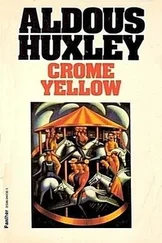In mutual bond the palm trees sway, the poplars sigh in harmony together, together sigh the plane trees, the alder whispers to the other alder.
An old man’s soldiering is foulness, and foulness an old man’s love.
How broad, how fine a flank, what a youthful thigh!
“From the proceedings of the Huguenot synod of Poitiers in 1560, it is evident that priests not infrequently secretly married their concubines, and, when the woman was a Calvinist, her equivocal position became a matter of grave consideration with her Church.” (Henry C. Lea, History of Sacerdotal Celibacy . From Chapter xxix, “The Post-Tridentine Church.”)
The legal truth is great, and shall prevail.
Tallemant des Raux, Historiettes (Paris, 1854), Vol. II, p. 337.
Ibid ., Vol. I, p. 189.
See Appendix, p. 361.
“The consolations and pleasures of prayer,” Surin writes in one of his letters, “go hand in hand with bodily mortification.” Unpunished bodies, we read elsewhere, “are hardly capable of receiving the visits of angels. To be loved and caressed by God, one must either suffer much inwardly, or else maltreat one’s body.”
“The Jesuits have tried to combine God and the world, and have gained only the contempt of both.” (Pascal.)
See Le Gouvello. Armelle Nicolas (1913): H. Brémond, Historie Littéraire du Sentiment Religieux en France (Paris, 1916).
See J. P. F. Deleuze, Practical Instruction in Animal Magnetism . Translated by T. C. Hartshorn (New York, 1890).
See William James, Varieties of Religious Experience .
“I exorcize thee, most unclean spirit, every onslaught of the Adversary, every spectre, every legion, in the name of our Lord Jesus Christ; be thou uprooted and put to flight from this creature of God.”
“I conjure thee, ancient serpent, by the Judge of the living and the dead, by thy maker, by the maker of the world, by him who has the power to cast thee into gehenna, that from this servant of God, who hastens back to the bosom of the Church, thou with the fears and afflictions of thy fury speedily depart.”
Barré was not the inventor of this adjunct to exorcism. Tallemant records that a French nobleman, M. de Fervaque, had used it successfully on a possessed nun of his acquaintance. Today, in South Africa, there are Negro sects which practise baptism by colonic lavage.
In the medical practice of the seventeenth and eighteenth centuries, the clyster was employed as freely and frequently as is the hypodermic syringe today. “Clysters,” writes Robert Burton, “are in good request. Trincavellius esteems of them in the first place, and Hercules of Saxonia is a greater approver of them. I have found (saith he) by experience that many hypochondriacal melancholy men have been cured by the sole use of clysters. For without question,” Burton adds in another passage, “a clyster, opportunely used, cannot choose in this, as in most other maladies, but to do very much good.” From earliest infancy all members of the classes that could afford to call in the physician or the apothecary were familiar with the giant syringe and the suppository—with copious rectal doses of “Castilian soap, honey boiled to a consistence or, stronger, of Scammony, Hellebore, etc.” It is, therefore, not surprising to find that, when he describes his childish diversions with the petites demoiselles who used to come and play with his sisters, Jean-Jacques Bouchard (the Prioress’s exact contemporary) speaks, as of a thing known to everyone, of the petits bastons , with which small boys and girls were in the habit of pretending to give one another clysters. But the child is father of the man and mother of the woman, and for generations the apothecary’s monstrous syringe continued to haunt the sexual imagination, not merely of the small fry, but also of their elders. More than a hundred and fifty years after M. Barré’s exploit, the heroes and heroines of the Marquis de Sade, in their laborious efforts to extend the range of sexual enjoyment, were making frequent use of the exorcist’s secret weapon. A generation earlier than the Marquis, François Boucher had produced, in L’Attente du Clystère , the most terrific pin-up girl of the century, perhaps of all time. From the savagely obscene and the gracefully pornographic there is an easy modulation to Rabelaisian fun and the smoking-room joke. One remembers the Old Woman in Candide with her little witticisms about cannulas and nous autres femmes . One thinks of the amorous Sganarelle, in Le Médecin malgré Lui , tenderly begging Jacqueline for leave to give her, not a kiss, but un petit clystère dulcifiant . M. Barré’s, with its quart of holy water, was a petit clystère sanctifiant . But, sanctifying or dulcifying, the thing remained what it was intrinsically and what, by convention and at that particular moment of history, it had become—an all but erotic experience, an outrage to modesty, and a symbol enriched by a whole gamut of pornographic overtones and harmonics, which had entered into the folkways and become a part of the circumambient culture.
In the letter which he wrote after a visit to Loudun in 1635, Thomas Killigrew describes the treatment meted out to that ravishing Sister Agnes, whose good looks and startlingly immodest behaviour had earned her, among the habitués of the exorcism, the affectionate nickname of le beau petit diable . “She was very young and handsome, of a more tender look and slender shape than any of the rest…. The loveliness of her face was clothed in a sad sable look which, upon my coming into the chapel, she hid, but presently unveiled again.” (Killigrew was only twenty at the time, and uncommonly handsome.) “And though she stood now, bound like a slave in the friar’s hand, you might see through all her misfortunes, in her black eyes, the unruined arches of many triumphs.” Like a slave in the friar’s hand —the words are painfully apt. A little later, as Killigrew records, the wretched girl was a slave under the friar’s feet. For after having thrown her into convulsions and made her roll on the floor, the good father triumphantly stood on his recumbent victim. “I confess it was so sad a sight,” says Killigrew, “I had no power to see the miracle wrought of her recovery, but went from thence to the inn.”
“…Urbain…. Tell his rank…. Priest…. Of what church?… Saint Peter’s.”
Kramer and Sprenger, Malleus Maleficarum , translated by the Rev. Montague Summers (London, 1948), pp. 5–6.
Op. cit ., p. 122.
So great the evil religion has aroused.
Kramer and Sprenger, op. cit ., p. 228.
Op. cit ., p. 147.
Op. cit ., p. 134.
Op. cit ., p. 137.
George Gifford, A Discourse of the Subtill Practices of Devils by Witches , as quoted in W. Notestein, A History of Witchcraft in England , p. 71.
Читать дальше











